Thinking about affiliate marketing? See those flashy YouTube ads promising “$10k/month from your laptop in 30 days!” while someone casually leans against a rented Lamborghini? Yeah, me too. Let’s talk about what really happens when you start this journey. The dream of escaping the 9-to-5, building passive income streams, maybe even working from a tropical paradise (which, yes, is possible – eventually!) is incredibly appealing. But diving in fueled only by hype is a fast track to disappointment. When I first started seriously exploring affiliate marketing years ago, my initial income expectations were… well, let’s just say wildly optimistic and quickly humbled by reality!
Setting realistic affiliate marketing income goals and understanding the typical timelines are absolutely crucial for staying motivated and building something sustainable. This isn’t about crushing your dreams; it’s about equipping you with the knowledge to navigate the path effectively. Forget the Lambos for now; let’s focus on building a solid foundation. In this guide, we’ll break down how affiliate income actually works (quick recap!), the key factors that really determine your earning potential, typical income benchmarks and timelines based on real data, common pitfalls to avoid, and most importantly, how you can set SMART, achievable goals for your own affiliate marketing journey. If you’re new here, make sure you understand what affiliate marketing actually is first!
First Things First: How Do Affiliates Actually Get Paid? (A Quick Recap)
Before we dive deep into income goals, let’s quickly touch base on how money even changes hands in this business. Unlike a salary that hits your bank account every month regardless of last week’s performance, affiliate income is performance-based. You earn commissions only when your marketing efforts lead to a specific, measurable result for the merchant (the company whose products you promote).
The main ways this happens are through different Commission Models:
- Pay-Per-Sale (PPS): The most common model. You get paid a percentage (e.g., 10%) or a flat fee (e.g., $50) when someone clicks your unique link and buys the product. Simple and directly tied to revenue.
- Pay-Per-Lead (PPL): You earn a smaller, usually fixed amount when someone completes an action that generates a lead for the merchant – like signing up for a free trial, downloading an ebook, or filling out a contact form. Easier to achieve than a sale, but pays less per action.
- Recurring Commissions: Often seen with software (SaaS) or membership sites. You earn a commission repeatedly for as long as the customer you referred stays subscribed. This is the golden ticket for building more stable, predictable income over time, though the initial payout might be smaller than a large one-time commission.
The commission model offered by an affiliate program drastically affects how quickly you might earn and how stable that income could be. Promoting a $2000 course with a 50% one-time commission ($1000 payout) requires a very different strategy and yields different cash flow than promoting a $50/month software with a 30% recurring commission ($15/month, potentially for years). Understanding how affiliate links and cookies track these actions is the technical foundation behind getting paid correctly for whichever model you pursue.
What Really Influences Your Affiliate Income Potential? (Key Factors)
Okay, why does one affiliate struggle to make $100 while another seems to effortlessly pull in five or six figures? Is it just luck, secret tricks, or being “first”? Mostly, no. Your earning potential is a direct result of several interconnected factors you need to understand when setting goals.
Niche Selection: Big Money vs. Crickets
This is huge. The niche (your specific topic or market focus) you choose sets the stage for everything else.
- Profitability Factors: Some niches just have more money flowing through them. Promoting high-priced items (think financial services, premium software, luxury travel) or products with high commission rates (like many digital courses or SaaS programs offering 20-70% recurring commissions) naturally offers a higher potential payout per conversion than promoting $5 trinkets with a 3% commission. Think about the math: making $1000 might require one high-ticket sale or hundreds of low-ticket sales.
- Demand & Competition: Is there actually an audience searching for solutions in this niche? Tools like Google Trends can give you a clue. At the same time, how crowded is it? Popular niches like “weight loss” or “making money online” are often saturated, meaning you need exceptional skill or a very unique angle to stand out. Sometimes a smaller, less competitive sub-niche is easier to gain traction in initially.
- Personal Fit: Don’t underestimate this! Trying to build authority in a niche you find mind-numbingly boring or know nothing about is tough. Your lack of genuine interest often shines through in your content, eroding trust. Choosing something you have at least some interest or experience in makes the long haul much more sustainable. I’ve seen people chase “profitable” niches they hated and burn out fast.
- Data Point: Industry surveys often show higher average earnings in niches like eLearning, Travel, Finance, Tech/SaaS, and Health compared to others like Arts & Crafts or Pets, largely due to differences in product value and typical commission structures.
[Link to article about 'Best Niches for Affiliate Marketing' coming soon]
Audience: Size Matters, But Trust Pays the Bills
You can’t make commissions without an audience to promote to.
- Size & Engagement: More eyeballs generally mean more potential clicks, but an engaged audience (people who comment, share, reply) is far more valuable than a large, passive one.
- Trust is Paramount: This is the absolute cornerstone. People buy from people they trust. Period. Building that trust takes time and consistent effort – providing genuinely helpful content, being transparent about your affiliate links (disclosure is key!), sharing honest opinions (even the downsides), and putting your audience’s needs first. I learned early on that trying to make a quick buck by promoting junk destroys trust instantly. Be helpful first, promotional second.
- Targeting: Do you really understand who you’re talking to? What are their biggest problems, fears, and desires? Recommending products that solve perfectly their specific problems leads to much higher conversions than generic promotions.
Traffic Generation: The Engine of Your Business
No traffic = no income. It sounds basic, but consistently getting the right people to see your content is often the biggest hurdle for beginners.
- Consistency: You need a steady flow of visitors interested in your niche.
- SEO: Ranking in Google for relevant keywords is a powerful long-term strategy for free, targeted traffic (used by over 70% of affiliates). But it’s a long game requiring skill and patience.
- Other Channels: Don’t put all your eggs in the Google basket! Social media (Facebook, Instagram, TikTok, Pinterest), email marketing (building your own list is crucial!), YouTube, and even paid ads all have their place. Diversifying reduces risk from algorithm changes.
- Quality over Quantity: 100 visitors who are genuinely searching for the solution you offer are infinitely more valuable than 10,000 random visitors who land on your page by accident and leave immediately. Focus on attracting relevant traffic.
[Link to article about 'Affiliate Traffic Generation' coming soon]
Commission Structures & Program Choice: Read the Fine Print!
The specific details of the affiliate programs you join directly impact your earnings.
- Rates & Models: Is it 5% or 50%? Is it per sale (PPS) or per lead (PPL)? Is it a one-time payout or recurring? These details drastically change the math.
- Cookie Duration: How long does the tracking cookie last after someone clicks your link? A 24-hour cookie (like Amazon’s) requires a quick purchase decision, while a 90-day cookie gives people more time to consider, increasing your chances on higher-priced items. Always check this!
- Merchant Reputation & Product Quality: Partnering with trustworthy brands offering solid products makes your job easier and protects your reputation. Promoting something subpar reflects badly on you. Checking the Pros and Cons of Affiliate Marketing can highlight the risks of merchant dependency.
Conversion Rates: Turning Clicks into Cash
Getting people to click your link is just the start. You need them to convert (buy the product, sign up, etc.).
- What’s Typical?: Average conversion rates often hover around 1-3%, but this varies hugely based on niche, traffic source, product price, and how well your content pre-sells the offer.
- Optimization: Improving your conversion rate involves creating persuasive content, having clear calls-to-action, ensuring your traffic is highly relevant to the offer, and sometimes using optimized landing pages. Even boosting your CR from 1% to 2% literally doubles your income for the same amount of traffic!
Content Quality & Strategy: Your Value Proposition
Especially in 2025, with Google’s focus on helpful content, you can’t just slap up thin reviews stuffed with links.
- Value First: Your primary goal should be to help your audience. Solve their problems, answer their questions, provide genuine insights. The promotion should feel like a natural extension of that value.
- Authenticity (E-E-A-T): Share your real experiences (Experience), demonstrate your knowledge (Expertise), build credibility (Authoritativeness), and be transparent (Trustworthiness). Google rewards this.
- Consistency: Regularly publishing high-quality content keeps your audience engaged and tells Google your site is active and relevant.
Your Effort, Experience & Expertise: The X-Factor
Let’s cut the crap: affiliate marketing takes work. A lot of it.
- Effort Pays Off: Success rarely happens by accident. It requires consistent, focused effort in learning, creating, promoting, and analyzing.
- Experience Matters: Why do experienced affiliates earn more? Because they’ve put in the time, learned what works (often through failure!), built valuable assets (like an email list or SEO rankings), and developed efficient systems. They treat it like a business, not a hobby.
- Learning Curve: Be prepared to learn constantly. SEO changes, new platforms emerge, marketing strategies evolve. Commitment to continuous learning is essential for long-term success.

Affiliate Income Benchmarks: What Do People Actually Earn?
Okay, let’s get to the juicy part – the numbers. What kind of income is actually realistic? It’s crucial to understand that affiliate marketing income varies wildly. There’s no standard salary. But looking at surveys and industry data gives us some benchmarks.
Income by Experience Level
Generally, earnings correlate strongly with experience:
| Experience Level | Typical Monthly Income Range ($) | Key Characteristics / Milestones |
|---|---|---|
| Beginner | $0 – $1,000 | Focus on learning, building platform/initial content, generating first trickles of traffic, low conversions. Often just covering tool costs. |
| Intermediate | $1,000 – $10,000 | Audience/traffic growing steadily, content library expanding, conversion rates improving, consistent monthly earnings achieved. |
| Advanced | $10,000 – $100,000 | Strong authority/brand, significant high-quality traffic, optimized sales funnels, likely diversified strategies (multiple niches/traffic sources). |
| Super Affiliate | $100,000+ | Elite tier (top ~1%), often large-scale operations, potentially managing teams, significant industry influence, multiple robust income streams. |
Table showing typical income ranges based on affiliate experience level (Synthesized from multiple industry sources/surveys like Authority Hacker, ZipRecruiter, general estimates).
Important Caveat: While some reports show average monthly incomes around $8,000, this average is heavily inflated by the massive earnings of the top few percent. Data from sources like PayScale (note: manager role, but indicative) suggests more modest median incomes. A large majority, especially beginners, earn significantly less. Crucially, surveys indicate that over half of affiliates might earn less than $10,000 per year. Don’t let the “average” fool you early on – focus on your own progress.
Income Variation Across Niches
As mentioned, your niche is a huge factor. Some areas consistently show higher average earning potential:
| Niche Category | Reported Average Monthly Income ($) (Approx.) | Key Considerations |
|---|---|---|
| Education / eLearning | $15,500 | High-ticket courses often involved, recurring potential via memberships. |
| Travel | $13,800 | High-value bookings (flights, hotels), but can be competitive/seasonal. |
| Finance / Investment | $9,300 | High customer lifetime value, requires significant trust, regulations apply. |
| Technology / Software | $6,000 – $7,400+ | SaaS offers great recurring commissions (often 20-70%), very competitive. |
| Health & Wellness | $7,200 | Huge market, diverse products (supplements, fitness), variable commissions. |
| Beauty / Skincare | ~$7,000 (Top Tier) | High volume potential, brand loyalty important, competitive. |
| Food / Nutrition | ~$5,000 – $6,000 | Subscription boxes offer recurring potential, broad appeal. |
| Hobbies (Varies Greatly) | $1,000 – $5,000+ | Depends entirely on the hobby’s market size and product values. |
| Pets & Animals | $900 | Passionate audience, but often lower Average Order Value (AOV). |
| Sustainable Products | $550 | Growing interest, but potentially lower commissions/volume currently. |
Table showing illustrative average monthly income potential by niche (Synthesized & approximated from various sources like Authority Hacker surveys). Note: Treat these as rough guides; your results depend heavily on your execution within the niche.
Timelines: How Long Does It Really Take? (Patience Required!)
This is where the “get rich quick” myth truly dies. Building a sustainable affiliate income stream takes time.
- First Commissions: Don’t expect significant earnings in your first few months. While a lucky sale might happen sooner, most reliable sources and experienced marketers suggest it typically takes 6 to 12 months of consistent, focused effort to start seeing any meaningful, repeatable income.
- Substantial Income (“Job Replacement” Level): Reaching an income level that could realistically replace a typical full-time salary often takes around two years, sometimes longer. This isn’t just about putting in hours; it’s about the time needed for your efforts to compound – for SEO rankings to climb, for your content library to grow, for audience trust to solidify.
- The “Beginner Hump” & Compounding: Why does it take so long? Because early efforts are about building foundational assets. Think SEO authority, a quality content portfolio, an engaged email list. These assets take time to build, but then start generating results at an accelerating rate. It often feels like pushing a giant boulder uphill for the first year or two, then suddenly, momentum picks up significantly if you’ve built the foundation correctly.
I remember hitting plateaus in my own journey where progress felt painfully slow. There were definitely times I questioned if all the effort was worth it. But sticking through those periods, continuing to learn and adapt my strategies based on the little data I did have, was what eventually led to breakthroughs. Patience isn’t just recommended; it’s mandatory.
Setting SMART Goals: Your Roadmap to Realistic Income
Okay, enough reality checks – how do you actually set goals that keep you motivated without setting yourself up for failure? Forget vague wishes like “I want to be rich.” Use the SMART framework to create actionable targets:
- Specific: What exactly do you want to achieve? (e.g., “Earn $100 in commissions from the [Specific Niche] category this month.”)
- Measurable: How will you track it? (e.g., “Track sales via my affiliate dashboard.”)
- Achievable: Is it realistic given your current situation (time, skills, resources) and the typical timelines discussed? (Be honest!)
- Relevant: Does this goal align with your overall objective of building a sustainable online business?
- Time-Bound: By when do you want to achieve it? (e.g., “within the next 30 days,” “by the end of Q3.”)
Step 1: Honest Self-Assessment
Before setting any goals, get real about your inputs:
- Time Commitment: How many focused hours per week can you genuinely dedicate? Be brutally honest.
- Budget: Are you starting with zero budget, or can you invest in essential tools (hosting, keyword research tool like Ubersuggest, email marketing service) or perhaps some training?
- Skills Inventory: What are you already good at (writing, video, social media)? What skills do you need to learn or improve (SEO, copywriting, analytics)?
- Your “Why” & Risk Tolerance: Why are you pursuing this? How much uncertainty can you handle, especially regarding income fluctuations?
Step 2: Strategic Alignment
Your goals need to match your strategy:
- Niche/Program Reality: Are your income goals feasible within your chosen niche and the commission structures of your selected programs?
- Timeline Check: Does your timeframe acknowledge the typical 6-12+ month ramp-up period?
Step 3: Use the SMART Framework (Example)
Let’s turn a vague goal into a SMART one:
- Vague: “Make some affiliate money soon.”
- SMART: “Achieve my first $100 in total affiliate commissions within the next 6 months by publishing 8 high-quality blog posts (2 per month) targeting low-difficulty keywords in the [Your Niche] niche, promoting [Specific Program A] and [Specific Program B].”
Step 4: Phased Goal Setting (Start with Actions!)
This is key for beginners. Break down the mountain climb:
- Short-Term Goals (0-6 Months): Focus on ACTION & LEARNING. Examples: Choose niche, set up website/platform, join 3-5 relevant affiliate programs, publish first 10-15 quality content pieces, learn basic SEO & keyword research, get first 100 email subscribers, achieve your first affiliate sale (celebrate this!). Income goals here should be minimal or focused on covering costs.
- Medium-Term Goals (6-24 Months): Focus on GROWTH & OPTIMIZATION. Examples: Reach 1,000+ monthly website visitors, grow email list to 500+, publish content consistently (e.g., weekly), improve conversion rate to 1%+, achieve consistent $XXX-$XXXX monthly income (e.g., target $500/mo by month 12, $2000/mo by month 24).
- Long-Term Goals (2+ Years): Focus on SCALING & SUSTAINABILITY. Examples: Reach significant income target ($5k, $10k+/month), become a recognized authority in your niche, diversify traffic sources significantly, optimize funnels for higher EPC, potentially outsource tasks or build a small team.
Focusing on actions you can control (like publishing content) early on is far more motivating than fixating on income you can’t yet directly influence.
Step 5: The Reverse Calculation (Grounding Your Goals)
Let’s do that quick math again to see what achieving a modest goal takes:
- Target Income: $1,000/month
- Avg. Commission/Sale: $50
- Sales Needed: 20 sales/month
- Est. Conversion Rate: 2% (0.02)
- Clicks Needed: 20 / 0.02 = 1,000 qualified clicks/month
- Est. CTR from Traffic: 1% (0.01)
- Impressions/Reach Needed: 1,000 / 0.01 = 100,000 impressions/month
Seeing this breakdown helps understand the scale required for even seemingly modest goals. It highlights why building quality traffic and optimizing conversions are so critical. Need help setting SMART goals? There are great resources online, like this guide from Indeed on SMART goals.
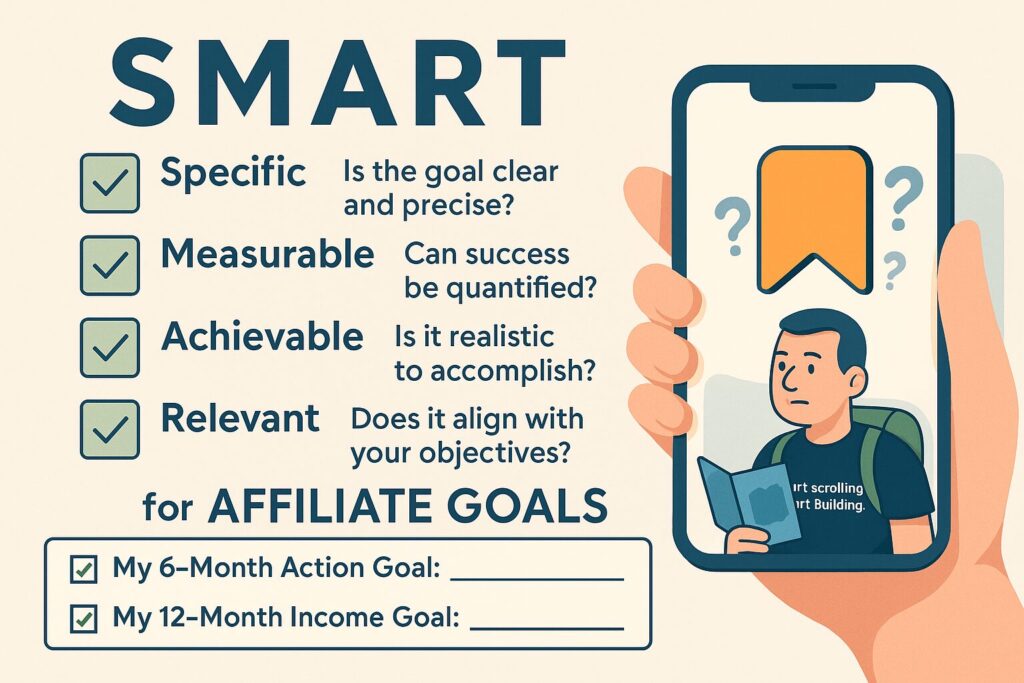
Avoiding Common Goal-Setting Pitfalls
Setting goals is one thing; sticking to them and achieving them requires avoiding common traps:
- The Comparison Trap: Seriously, stop comparing your messy beginning to someone else’s curated success story online! It’s demotivating and unproductive. Focus on your progress against your goals. Your journey living as an expat in the Philippines is unique; leverage that, don’t compare it.
- Ignoring Data (KPIs): Flying blind is a terrible strategy. You must track your key performance indicators (KPIs). How many people are visiting your site? Where are they coming from? Which links are getting clicked? What’s your conversion rate? What’s your EPC? Without data, you’re just guessing.
[INTERNAL LINK OPPORTUNITY: Link to article about 'Tracking, Analytics & Optimization' here] - Giving Up Too Soon: Remember the timelines! Most people quit during that initial “beginner hump” before their efforts start compounding. Affiliate marketing rewards persistence. Cultivating the right mindset is half the battle.
[INTERNAL LINK OPPORTUNITY: Link to article about 'Essential Mindset' here] - Not Having a System or Strategy: Randomly publishing content or promoting offers rarely leads to predictable results. Following a proven strategy, learning from mentors, or using systems designed to streamline the process (like building effective funnels) dramatically increases your odds of hitting your goals. This structure is key. For instance, following a clear roadmap, like the one outlined in this free training that simplifies the starting process, can provide the structure needed to hit realistic goals faster by focusing your efforts.
Conclusion: Building Your Future, One Realistic Goal at a Time
So, what’s a realistic affiliate marketing income? The honest answer is: it depends. It depends on your niche, your effort, your strategy, your skills, and your patience. But based on industry data and experience, it’s definitely not the instant windfall some gurus promise. Success requires understanding the pros and cons, mastering the step-by-step process, knowing the key terms, and, crucially, setting realistic goals.
My own 20+ year journey online, especially navigating life as an expat, has been filled with learning, adapting, and pushing through periods where income felt anything but stable. Setting achievable milestones, tracking progress relentlessly, and adjusting my expectations based on reality were absolutely essential. Don’t let the hype discourage you with its impossibility, but don’t let the challenges paralyze you either. Focus on consistent action, providing genuine value, and celebrating those small wins along the way – they keep you going!
Ready to stop dreaming vaguely and start planning concretely? Set your first SMART, activity-based goal today! Maybe it’s simply finishing your niche research this week, publishing your next blog post, or finally setting up that email list. And if you do want that structured path to follow, checking out the free training video is a solid next step for many beginners looking for clarity and a proven roadmap.
Take it one step at a time, stay realistic, and keep building!
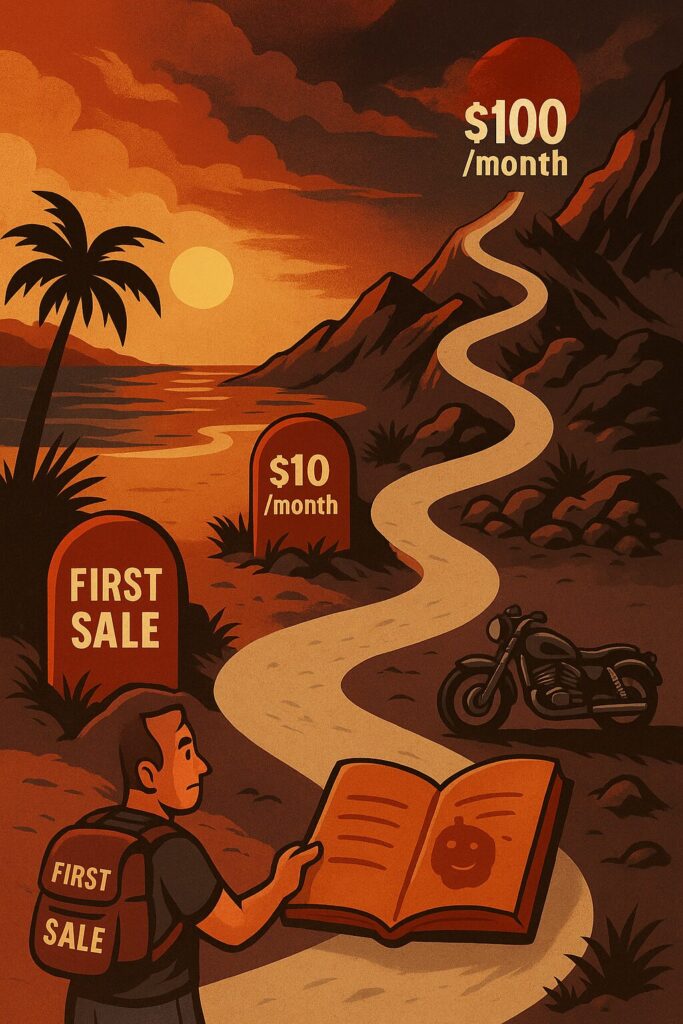



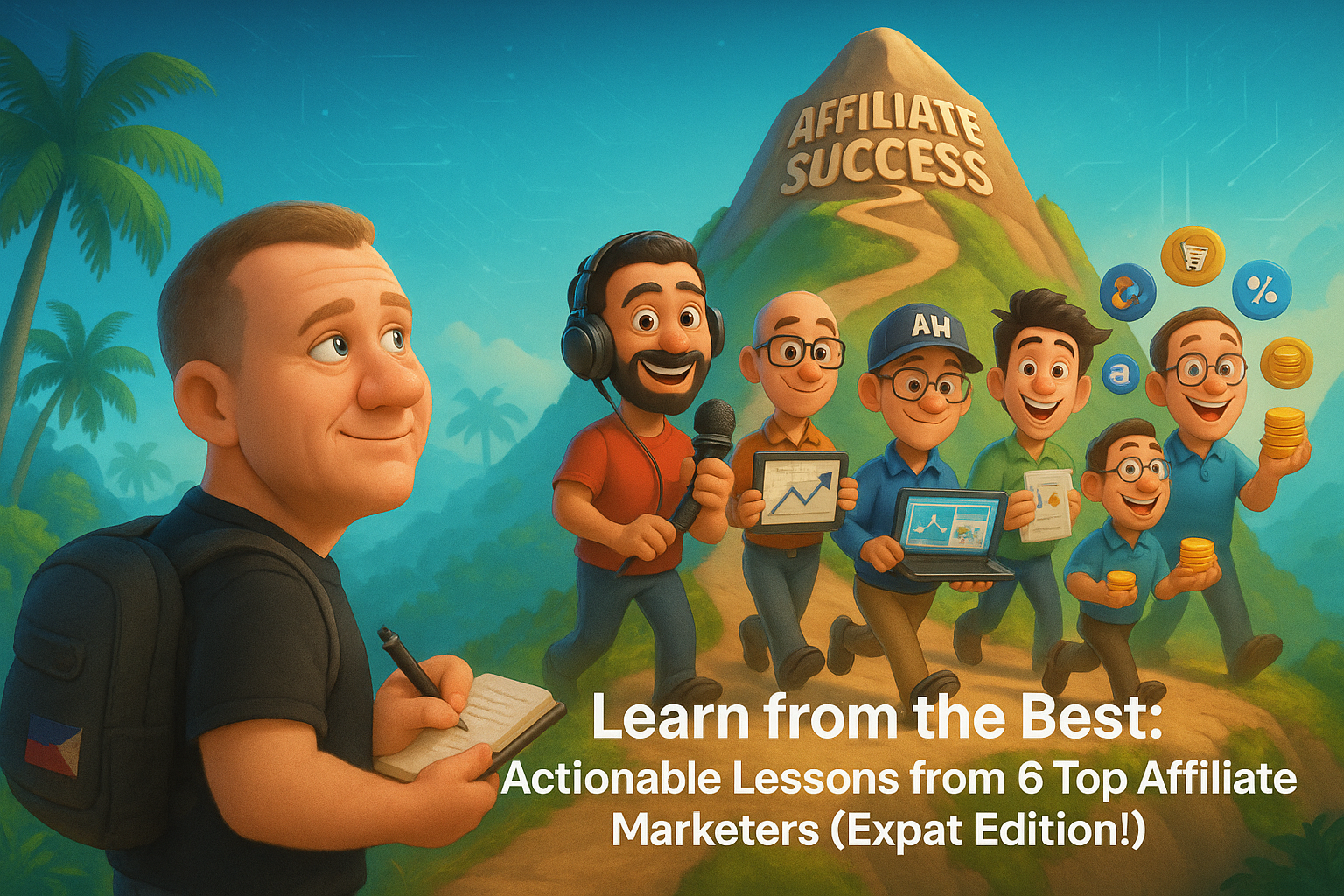

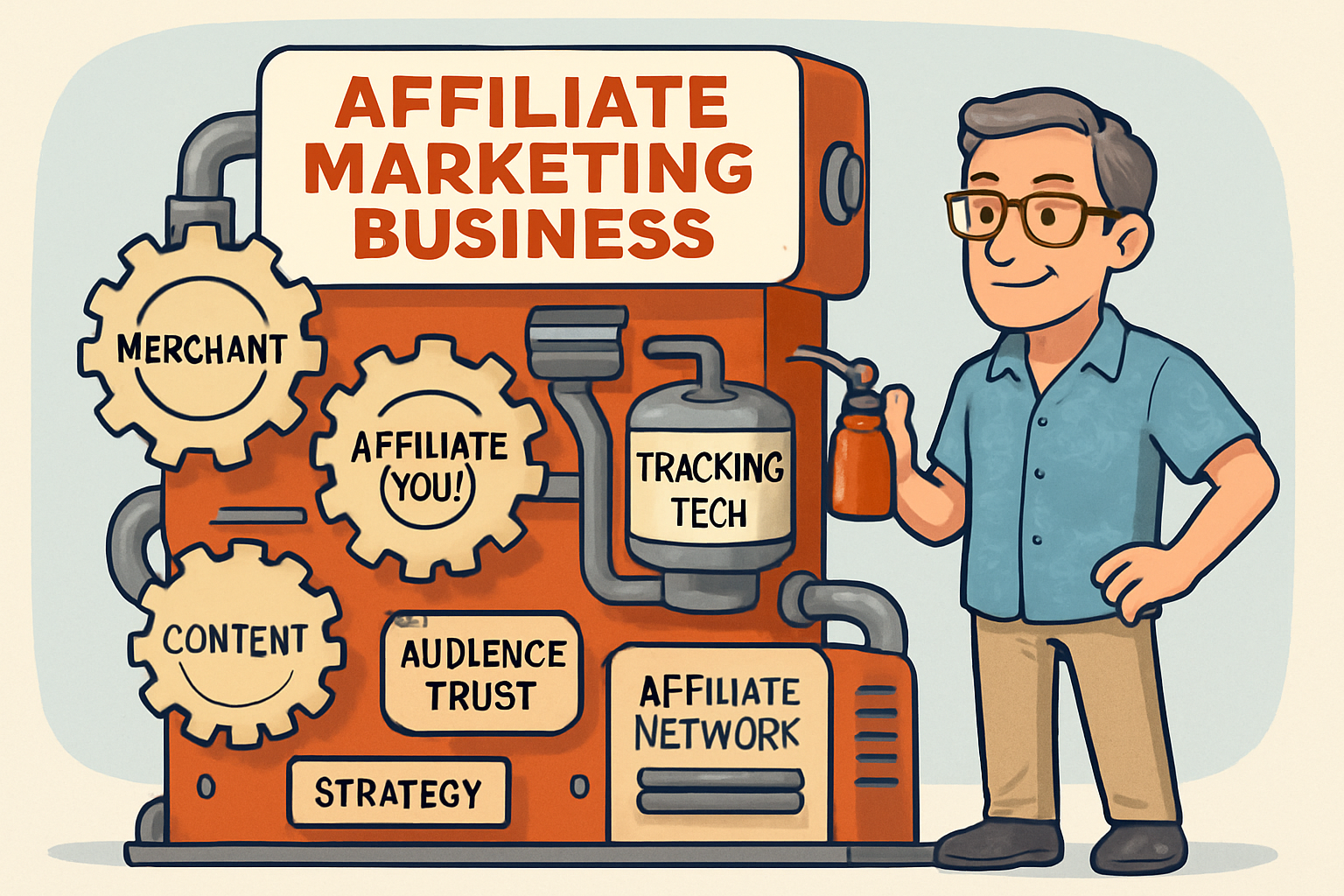





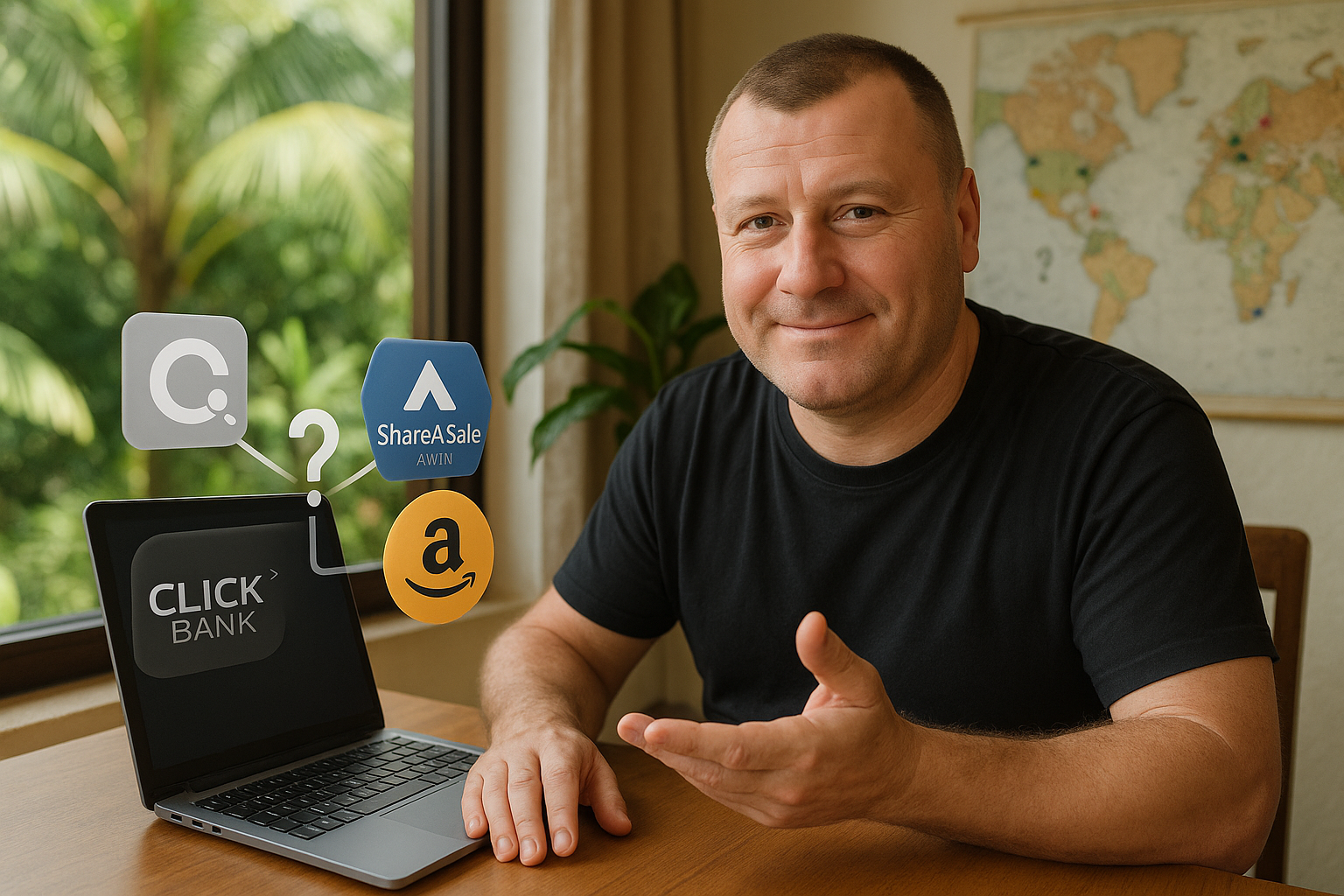
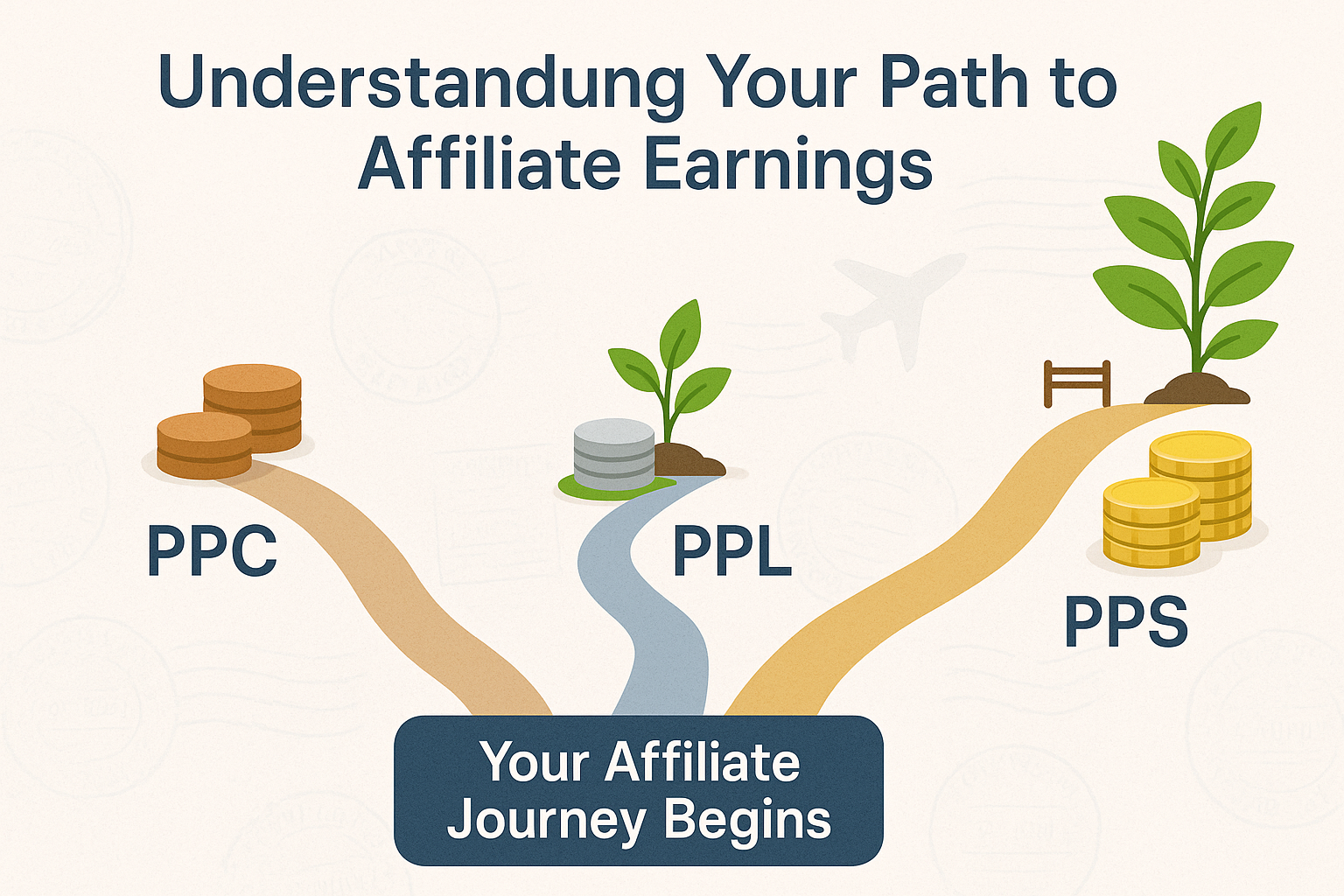
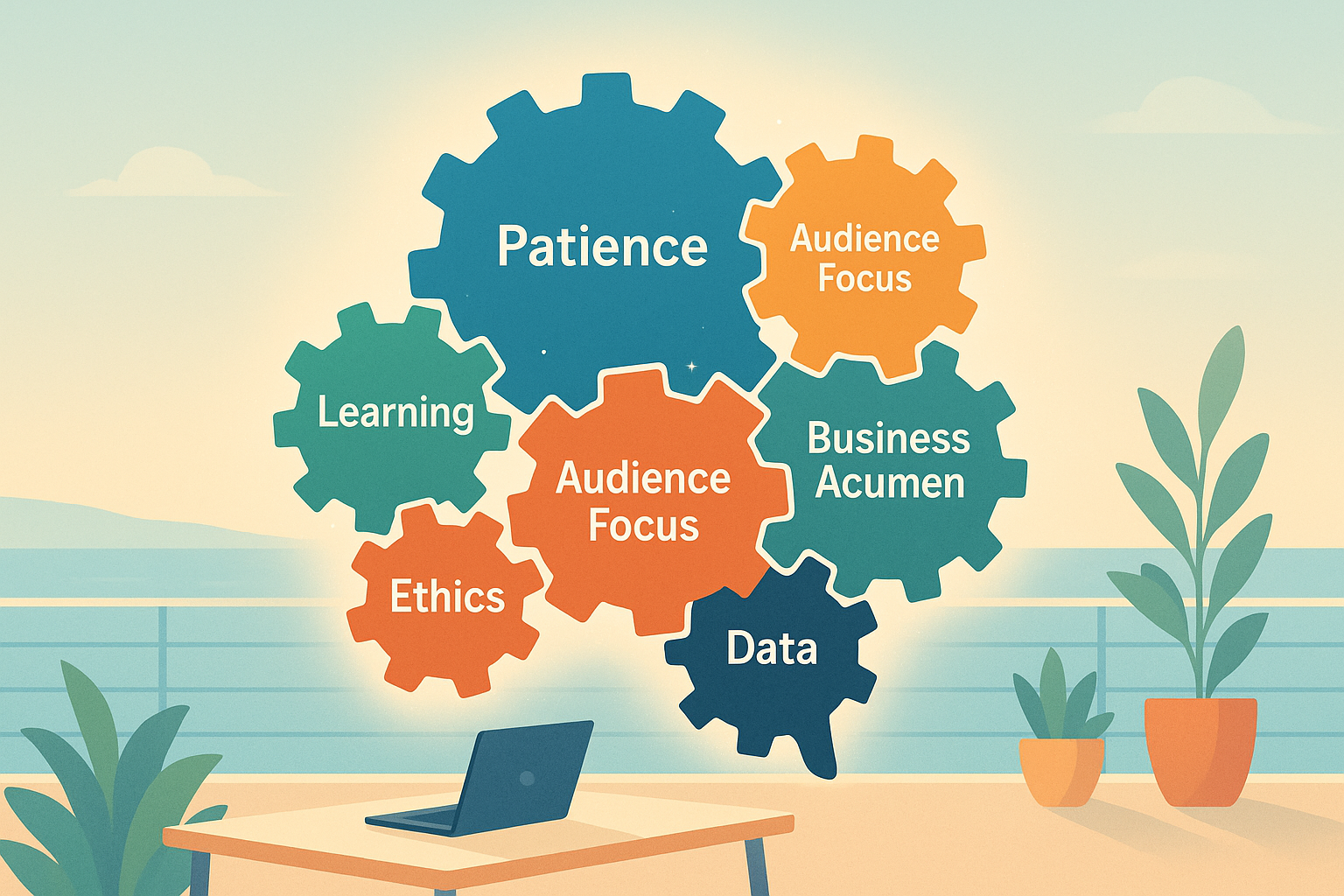
Leave a Reply